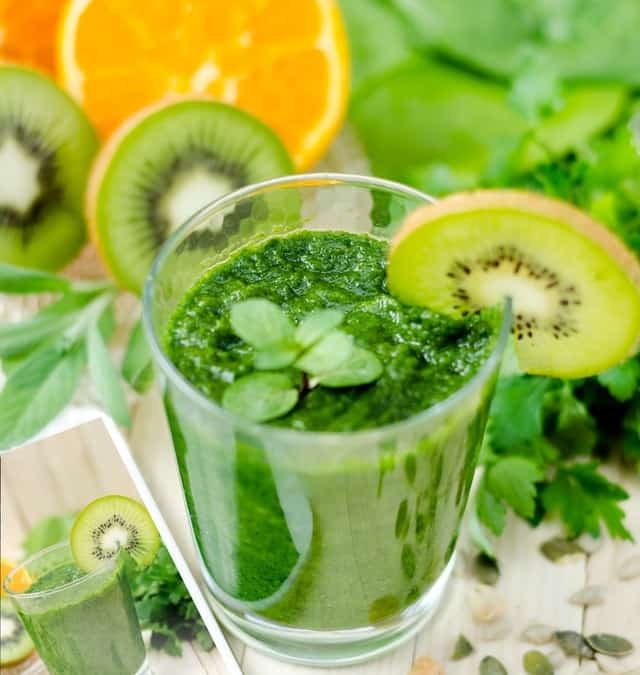We always hear that fiber is very important for our bodies and that we should eat more of it, but we will see why this is so.
It is simply a carbohydrate, but the interesting thing about it is that the body cannot digest it.
Most of the carbohydrates turn into sugar but not fiber, it passes generally through your stomach, colon, and small intestine and then out of your body.
It helps to regulate the body sugar and keep the hunger and blood sugar on track.
Types of fiber:
Fiber is classed as either soluble (it dissolves in water) or insoluble (it does not dissolve in water).
- Soluble fiber:
-
This dissolves in water and forms a gel-like substance. It can aid in the reduction of blood cholesterol and glucose levels.
-
Also this gel slows the digestive process, which can help you lose weight.
-
Soluble fiber contains in oats, peas, beans, apples, citrus fruits, carrots, barley, and psyllium.
-
- Insoluble fiber:
-
This type of fiber aids in the flow of material through the digestive system and increases stool size, making it useful for people who suffer from constipation.
- It keeps your digestive system on track.
-
-
- It can be found in a variety of foods, including vegetables such as cauliflower, green beans and potatoes also fruits, nuts and seeds, wheat bran, and whole-grain foods such as whole-wheat pasta and brown rice.
Sources:
- Soluble:
- Apple (1 medium, 4.5g)
- Oats (1 cup, 6g)
- Beans (1 cup, around 6-8g)
- Carrots (1 cup, 3g)
- Citrus Fruits (like orange, lemon) (1 medium orange, 3g)
- Peas (1 cup, 8.8g)
- Barley (1 cup, 6g)
- Psyllium (1 tsp, 4-5g)
- Avocado (1 avocado, 13g)
- Sweet Potato (1 medium, 3-4g)
- Guava (1 fruit, 3g)
- Broccoli (1 cup, 5g)
- Pears (1 medium, 5.5g)
- Blueberry (1 cup, 8g)
- Insoluble:
- Cauliflower (1 cup, 8g)
- Leafy Greens (1 cup, 3g)
- Avocado (1 fruit, 13g)
- Berries (like blackberry, strawberry, raspberry) (1 cup, around 8g)
- Green Peas (1 cup, 8g)
- Sweet Potato (1 cup, 8g)
- Walnut (in 100g, 7g)
- Almond (1 ounce (oz), 3.5g)
- Popcorn (3 cup, 3.3g)
- Whole grains (in 100g, 7g)
- Brown Rice (1 cup, 4g)

Benefits:
1. It helps in weight loss:
Having a high dietary fiber diet helps to reduce weight in a natural way, and it can have a significant impact on body weight.
Soluble fiber keeps your gut bacteria healthy and helps you lose weight by curbing your hunger.
Fiber-rich foods not only fill you full faster and keep you satisfied for longer, but they also fulfill the calorie intake of food from being absorbed by your body.
It slows digestion by expanding and bulking meals in the GI tract and it leads to weight loss.
Fiber-rich foods also have a lower energy density, allowing you to feel fuller without taking too many calories. And this leads to weight loss or we can say reduce obesity.
2. Lower the risk of diabetes:
Fiber also aids in the regulation of blood sugar levels. The interesting thing about soluble fiber is that it can slow the absorption of sugar by doing that it keeps the sugar level maintain.
Insoluble fiber can also assist to lower the risk of type 2 diabetes. Increasing the amount of fiber in one’s diet may also help with diabetes.
This can help you feel more satisfied with your diet and keep your blood sugar levels in check.
Generally for diabetes patient diet contain high-calorie and low in fiber food but if you shifted it to the high fiber and low calorie or calories with the fiber will give you a tremendous result.
3. Helps in constipation:
We can also state that constipation is a major issue. Constipation is the most common gastrointestinal problem in the United States.
Increased fiber in your diet can help you get rid of constipation, which is one of the main benefits.
It is supposed to help in the absorption of water, the bulking up of stool, and the speeding up of stool passage through the intestine.
Soluble fiber that gels in the intestine and isn’t processed by gut bacteria is frequently beneficial, psyllium is a nice example of a gel-forming fiber.
Sorbitol, a kind of fiber, has a laxative effect by pulling water into the colon. Sorbitol is rich in prunes.
4. Reduce the risk of cancer:
The studies says that the correlation of fiber and cancer that if you consume 10gm of fiber daily then it reduce the risk of colorectal cancer by 10 % and breast cancer by 5%.
Increased dietary intake, particularly cereal fiber, has been linked to a lower risk of dying from cardiovascular disease and all cancers, according to research.
Do you know colorectal cancer is the world’s third-leading cause of cancer death?
Because fiber does the majority of its work in the colon, the majority of the research on fiber and cancer prevention has focused on this type of cancer.
A high intake of fiber-rich foods has been related to a lower risk of colon cancer in numerous studies.
Women who consume more high-fiber foods, such as vegetables and fruit, during adolescence and young adulthood may have a decreased risk of breast cancer than those who eat less dietary fiber.
5. Decrease the level of cholesterol:
Actually, dietary fiber is an important component of a healthy diet. It is essential for keeping gut health and lowering the risk of chronic health conditions.
To break down the fat content in food, your body uses bile salts, which are excreted by the gallbladder. Cholesterol is used to make bile salts.
Soluble fiber has been shown to reduce cholesterol by binding to bile (which contains cholesterol) and removing it from the body. This could help lower the risk of heart disease.
A high total dietary fiber intake was linked to a 40% lower risk of coronary heart disease in a Harvard study of over 40,000 male health professionals.
According to a study on average, taking 2–10 gm of soluble fiber per day lowered total cholesterol by 1.7 mg/dl and LDL (bad) cholesterol by 2.2 mg/dl.
How much fiber we should consume:
Fiber requirement for women is at least 21-25gm but men should aim for 30-38gm.
Children between 1 to 18 should consume 14 to 25 gm of fiber intake.
This total fiber requirement you should get through food, not a supplement.
Conclusion:
- There are two types of fiber soluble and insoluble, both are having its own benefits.
- Soluble fiber helps to reduce cholesterol and also improves our blood sugar levels if you are diabetes person.
- While the insoluble fiber is helpful for constipation-related problems.
- Having more fiber is good but a high intake generally more than 70g leads to gas and bloating. And you should increase your intake slowly not rapidly.
- Oats, vegetables, dry fruits, beans, and whole grains are some sources that are easily available, and other sources we have given a list above and also raspberry is a rich source of fiber.
Keep sharing, keep supporting…
Which fiber food do you like?
#fiber #solublefiber #insolublefiber #fiberbenefits

